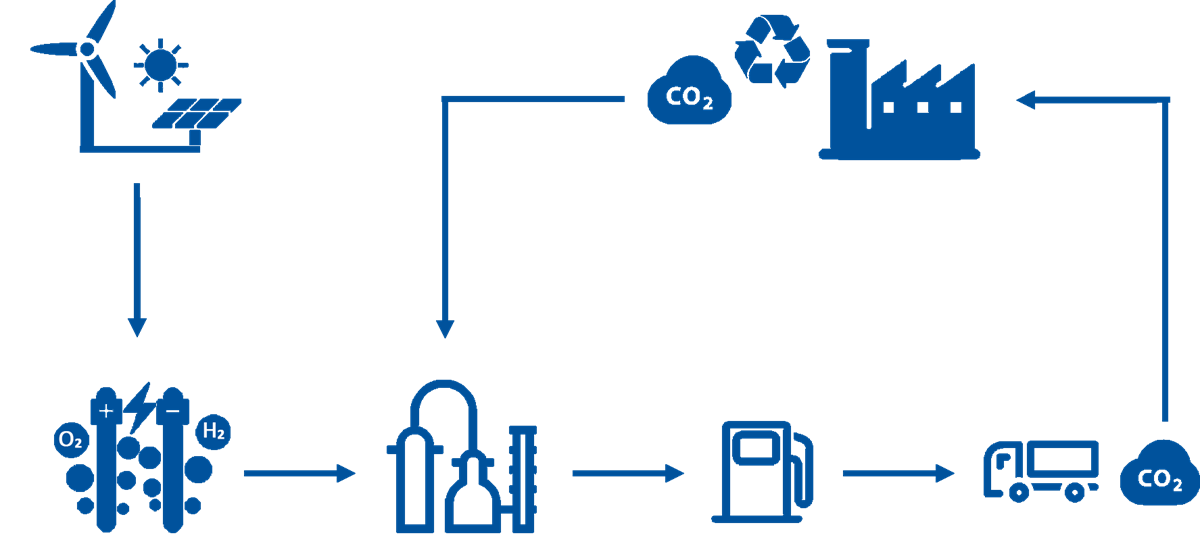- Trucks
- Services
- Dealer network
- Stories

Power-to-Liquid
Up to 100% reduction in CO₂ emissions
When we look a little further into the future, we see fuels that can lead to a 100% reduction in CO2 emissions. These ‘Power-to-Liquid’ fuels involve the use of electrolysis and green electricity to produce hydrogen, which is then combined with recycled CO2 to produce a synthetic diesel.
Recapturing CO2
Central to the principle of ‘Power-to-Liquid’ fuels are the filters that are currently being developed to capture and store CO2.
Recapturing the CO2 released during combustion and combining it with hydrogen closes the circle, with the CO2 that was initially released being reused to create fuel.
CO2-neutral
The future ‘Power-to-Liquid’ fuels can be distributed via existing fuel distribution networks and could already be used in the modern combustion engine. Using these fuels is completely CO2 neutral, provided that the hydrogen is produced using for instance solar, water or wind energy. ‘Power-to-Liquid’ fuels are currently being produced on a small scale and at high prices. It is expected that these fuels will become more widely available between 2025 and 2030.
